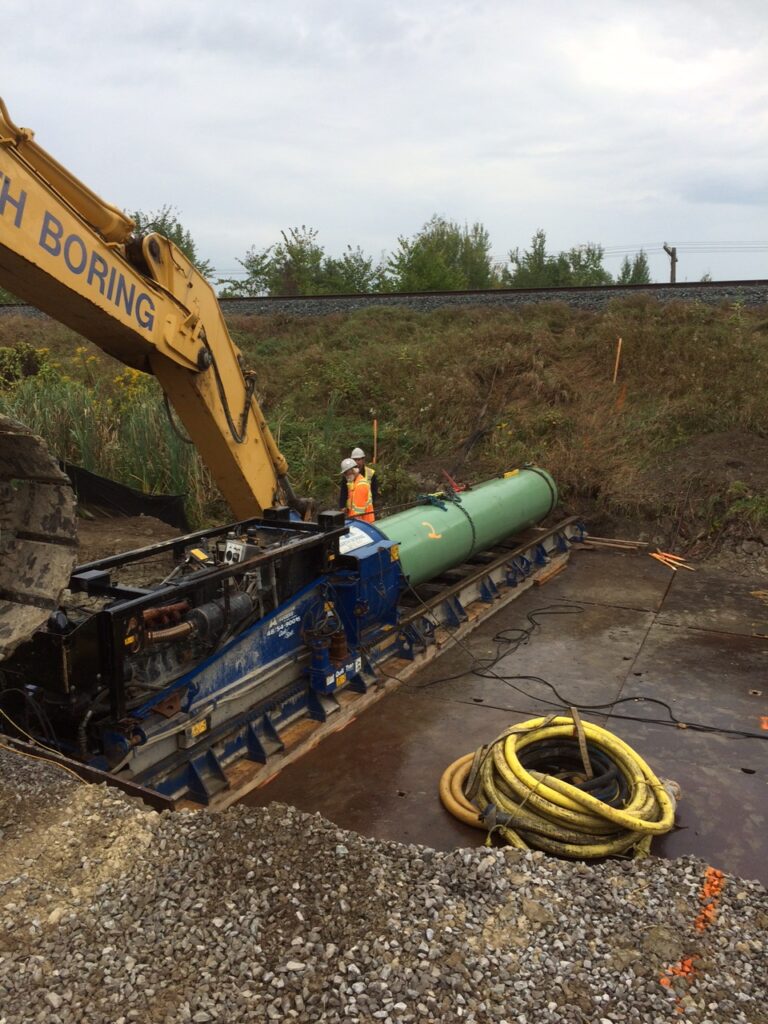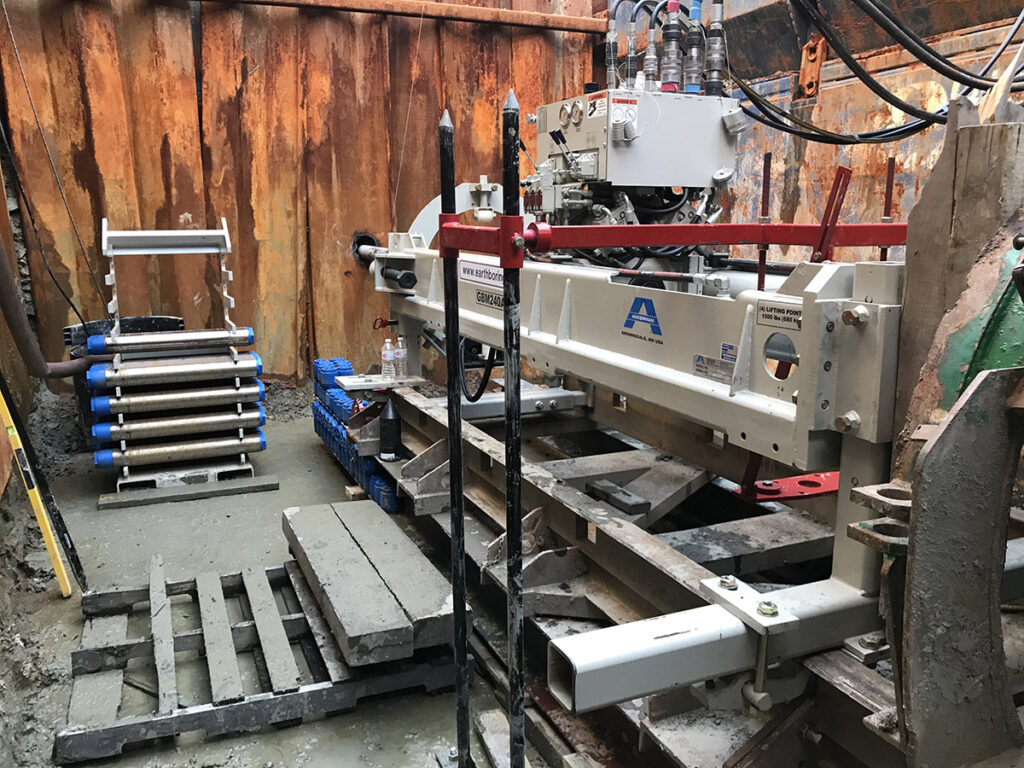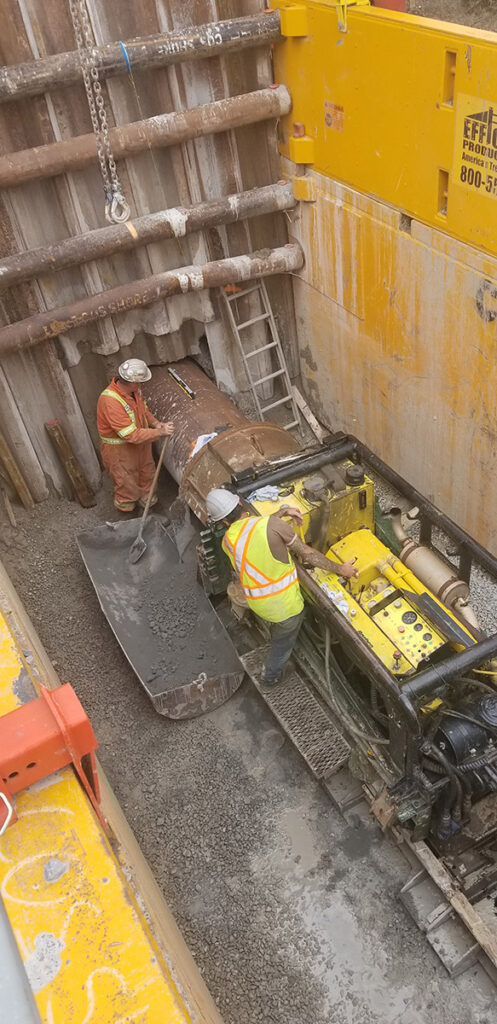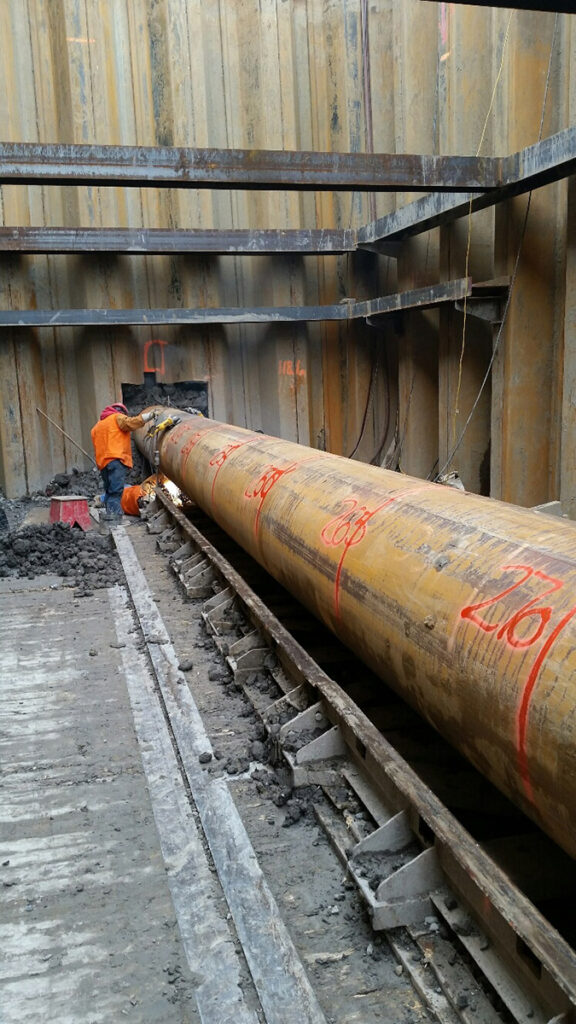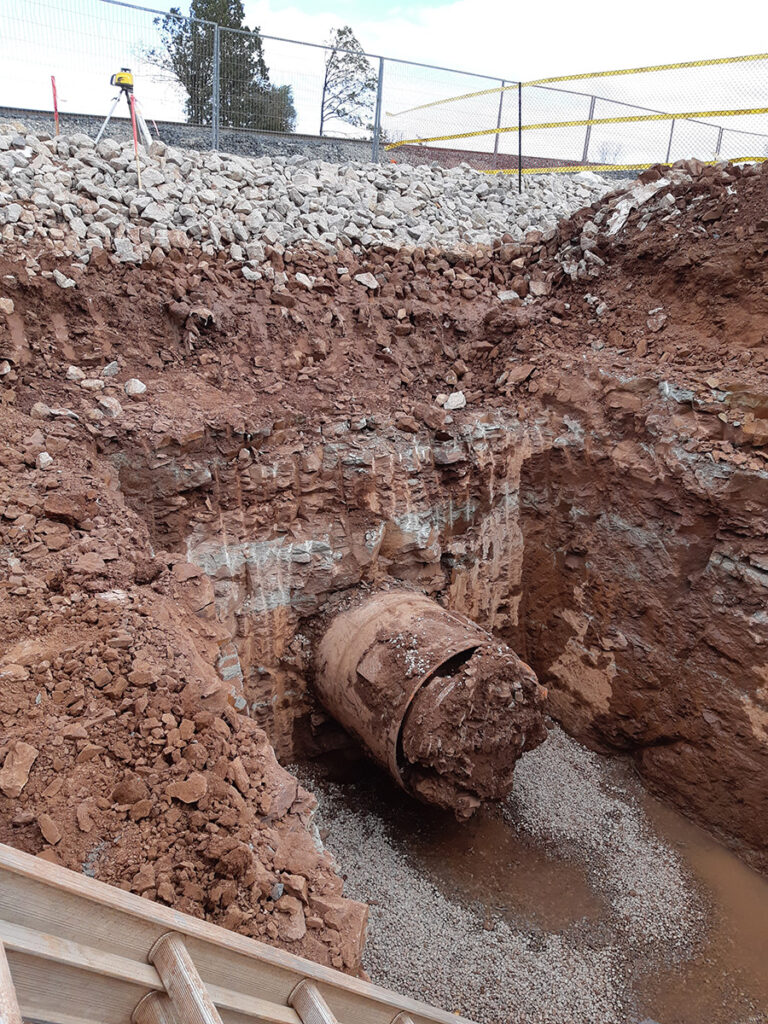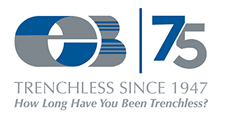Auger Boring and Earth Boring are almost synonymous. Over the decades we have delivered countless auger boring projects – on-time, on-line and to grade.
We can meet your distance and grade needs from 12″ (300mm) to 72″ (1800mm) diameters. Need more? We have the solution for you.
Our friendly, solution-oriented crews are skilled in meeting your augering needs. We will work with you to detail project considerations prior to the start of your project.
Challenging ground? We have SBU options to deliver big tunnel technology to your small boring needs.
Long distance? Critical grade? We can address that too. Our Guided Bore Machine (GBM) supplements the auger bore operation for those more challenging installations.
Our front-line crews quickly establish rapport and leave designers and contractors alike with the highest level of confidence that the work is getting done with the highest level of professionalism.
Contact Us to discuss your trenchless needs.
